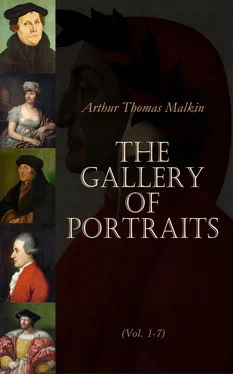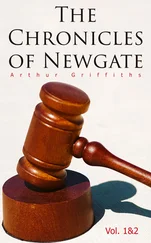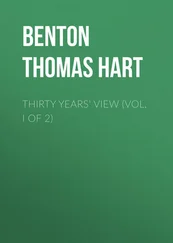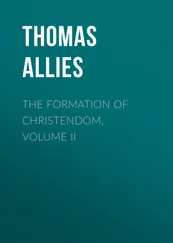The personal history of Corneille furnishes little anecdote; we have only further to state, that he was chosen a Member of the French Academy in 1647, and was Dean of that society at the time of his death, which took place in 1684, in his seventy-ninth year.
He is said to have been a man of a devout and melancholy cast. He spoke little in company, even on subjects which his pursuits had made his own. The author of ‘Melanges d’Histoire et du Literature,’ a work published under the name of Vigneut Marville, but really written by the Pêre Bonaventure d’Ayounne, a Cistercian monk of Paris, says, that “the first time he saw him, he took him for a tradesman of Rouen. His conversation was so heavy as to be extremely tiresome if it lasted long.” But whatever might be the outward coarseness or dulness of the man, he was mild of temper in his family, a good husband, parent, and friend. His worth and integrity were unquestionable; nor had his connexion with the court, of which he was not fond, taught him that art of cringing so necessary to fortune and promotion. Hence his reputation was almost the only advantage accruing to him from his productions. His works have been often printed, and consist of more than thirty plays, tragedies and comedies.
Those who wish for a more detailed account of this great writer will find it in his life, by Fontenelle, in Voltaire’s several prefaces, in Racine’s Speech to the French Academy on the admission of his brother Thomas, and in Bayle. Many scattered remarks on him may also be found throughout Dryden’s critical prefaces.

Tragic Masks, from Pompeii.
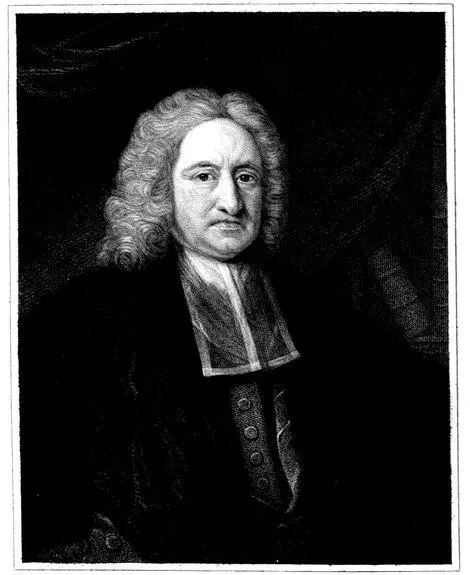
Engraved by W. T. Fry. HALLEY From an original Picture ascribed to Dahl in the possession of the Royal Society. Under the Superintendance of the Society for the Diffusion of Useful Knowledge. London. Published by Charles Knight, Pall Mall East.
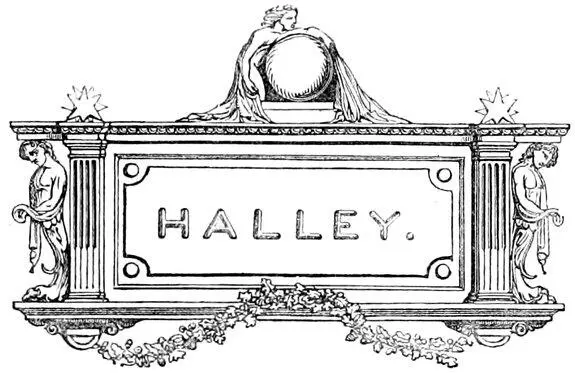
Table of Contents
Edmund Halley, one of the greatest astronomers of an age which produced many, was born at a country house named Haggerston, in the parish of St. Leonard, Shoreditch, October 29, 1656. His father, a wealthy citizen and soap-boiler, intrusted the care of his son’s education to Dr. Gale, master of St. Paul’s School. Here young Halley applied himself to the study of mathematics and astronomy with what was then considered great success; for, before he left school, he understood the use of the celestial globe, and could construct a sun-dial; and, as he has himself informed us, had already observed the variation of the needle. In 1673, being in the seventeenth year of his age, he was entered of Queen’s College, Oxford, and two years afterwards gave the first proof of his astronomical genius by publishing, in the Philosophical Transactions, 1676, “a direct and geometrical method of finding the Aphelia and Eccentricities of the Planets.” His father, who seems to have had none of that antipathy to a son’s engaging in literary or scientific pursuits, which is represented as common to men of commerce by the writers of that age, supplied him liberally with astronomical instruments. Thus assisted, he made many observations, particularly of Jupiter and Saturn, by means of which he discovered that the motion of Saturn was slower, and that of Jupiter quicker than could be accounted for by the existing tables; and made some progress in correcting those tables accordingly. But he soon found that nothing could be done without a good catalogue of the stars. This, it appears, he had some intention of forming; but finding that Hevelius and Flamsteed were already employed on the same work, he proposed to himself to proceed to the southern hemisphere, and to complete the design by observing those stars which never rise above the horizons of Dantzic and Greenwich. Having obtained his father’s consent, and an allowance of £300 a-year; and having fixed upon St. Helena as the most convenient spot, he applied to Sir Joseph Williamson and Sir Jonas Moor, the Secretary of State and the Surveyor of the Ordnance. These gentlemen represented his intention in a favourable light to Charles II., and also to the East-India Company, who promised him every assistance in their power. Thus protected, he set out for St. Helena in 1676; his principal instruments being a sextant of five feet and a half radius, and a telescope of twenty-four feet in length. He found the climate not so favourable as he had been led to believe, and moreover describes himself as disgusted with the treatment he received from the Governor. Under these disadvantages, he nevertheless formed a catalogue of 350 stars, which he afterwards published under the name of ‘Catalogus Stellarum Australium.’ He called a new constellation which he had observed, by the title of Robur Carolinum , in honour of the well-known oak of Charles II. While at St. Helena he also observed a transit of Mercury, and suggested the use which might be made of similar phenomena in the determination of the sun’s distance from the earth. He first observed the necessity of shortening the pendulum as it approached the equator; or, at least, when Hook afterwards mentioned the circumstance to Newton, it was the first time the latter had heard of the fact.
Soon after his return to England, in November, 1678, Halley obtained the degree of M.A. from the University of Oxford, by royal mandate, and was elected Fellow of the Royal Society. This body had been requested by Hevelius to select some person who might add the southern stars to his catalogue. A dispute was also pending between him and Hook, as to the use of telescopes in observing the stars, to which the former objected. To aid Hevelius, as well as to decide upon the character of his observations, Halley went to Dantzic, and it is related, as a proof of the energy of his character, that in one month from the time of his landing in England he published his catalogue, procured a mandate, took the degree, was elected F.R.S., arranged to go to Dantzic, and wrote to Hevelius. He arrived on the 26th of May, 1679, and the same night entered upon a series of observations with Hevelius, which he continued till July, when he returned to England, fully satisfied of his coadjutor’s accuracy.
In 1680 he again visited the continent. Between Paris and Calais he had a sight of the celebrated comet of that year, well known as the one by observations of which the orbit of these bodies was discovered to be nearly a parabola. He returned from his travels in the year 1681, and shortly after married the daughter of a Mr. Tooke then Auditor of the Exchequer, which union lasted fifty-five years. He settled at Islington, where, for more than ten years, he occupied himself with his usual pursuits, of the results of which we shall presently speak more particularly.
In 1691 the Savilian Professorship of Astronomy became vacant, and, as Whiston relates, on the authority of Dr. Bentley, Bishop Stillingfleet was requested to recommend Mr. Halley. But the astronomer’s avowed disbelief of Christianity interfered with his election in this instance, and the Professorship was given to Dr. Gregory. It is related by Sir David Brewster that Halley, when inclined to enter upon religious subjects with Newton, always received a check in words like the following, “You have not studied the subject—I have.”
Читать дальше
